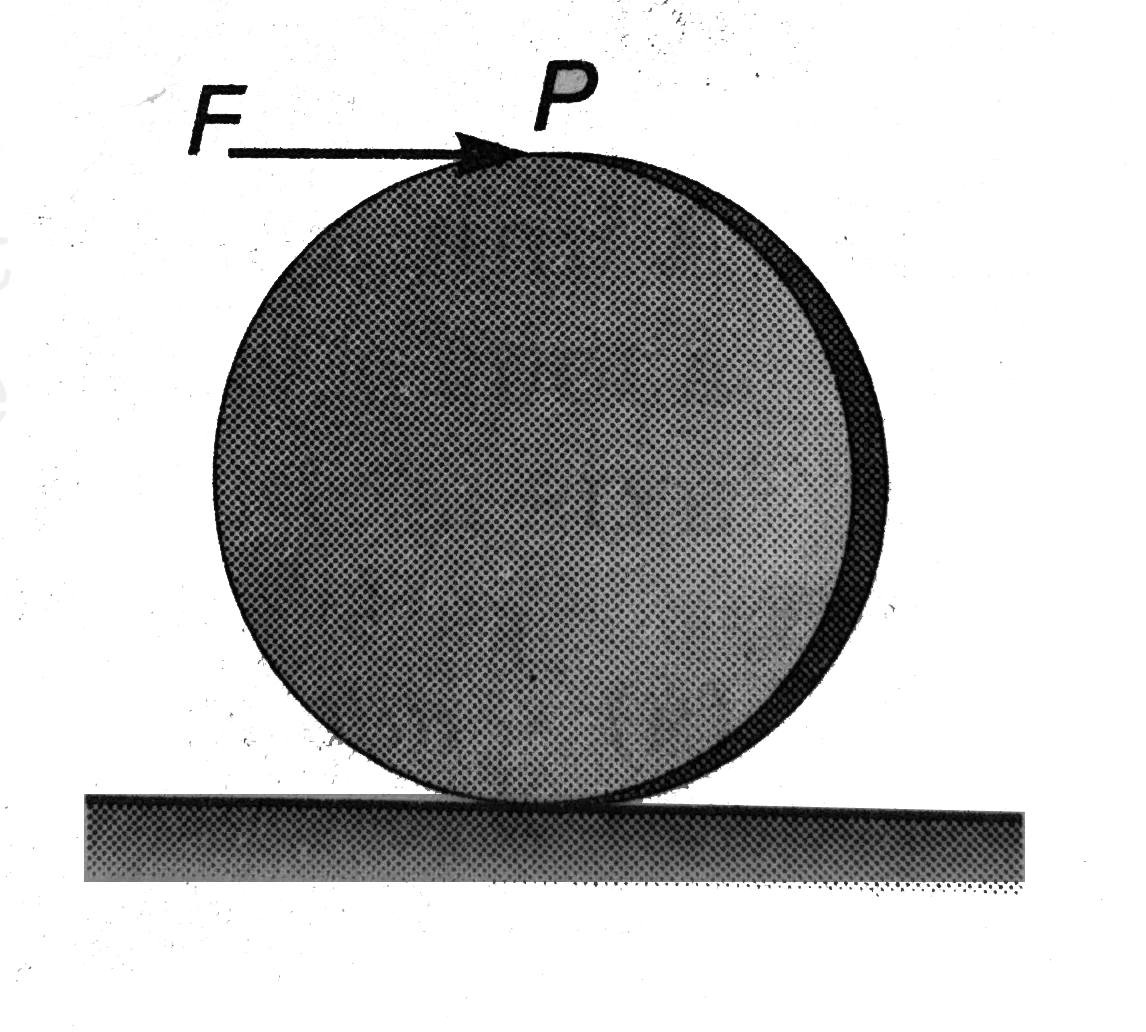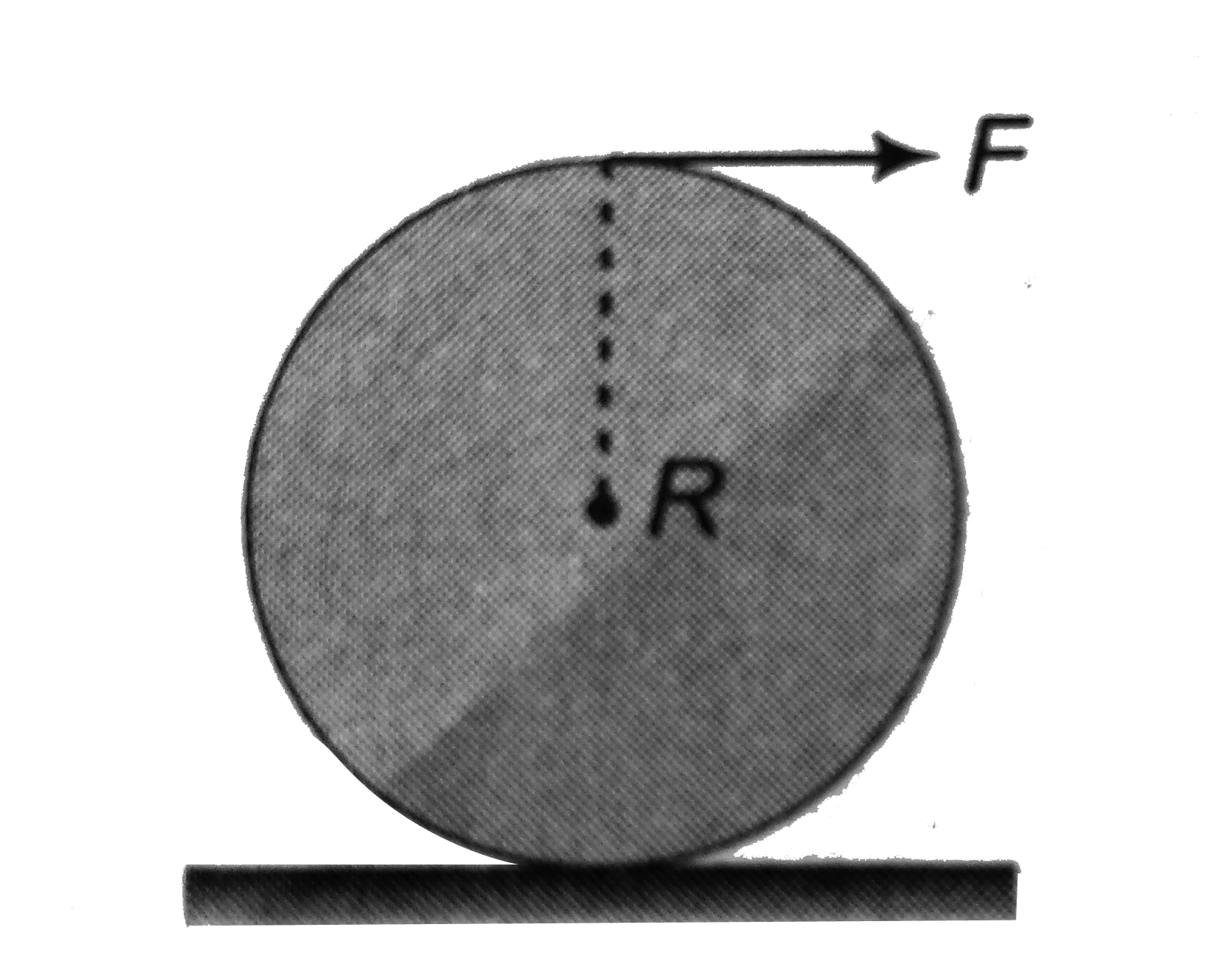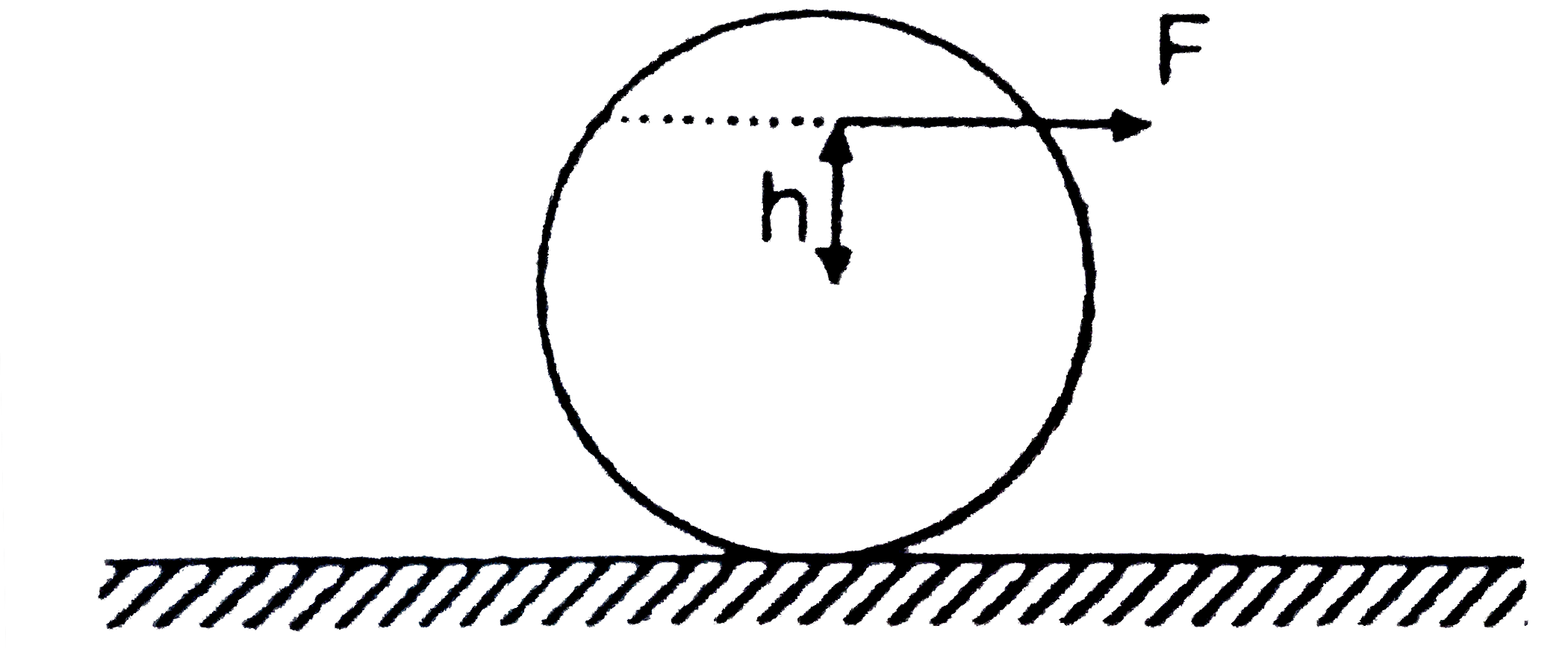A uniform solid cylindrical roller of mass 'm' is being pulled on a horizontal surface with force F parallel to the surface and applied at its centre. If the acceleration of the cylinder is 'a' and it is rolling without slipping, then the value of 'F' is :−
32ma
2ma
53ma
ma
The correct Answer is:A
To solve the problem, we need to analyze the forces and torques acting on the uniform solid cylindrical roller.
1. Identify the Forces Acting on the Cylinder:
- The applied force F is acting horizontally at the center of the cylinder.
- The frictional force f acts in the opposite direction to the applied force, preventing slipping.
2. Apply Newton's Second Law:
- The net force acting on the cylinder can be expressed as:
F−f=ma
- Here, m is the mass of the cylinder and a is its linear acceleration.
3. Apply the Torque Equation:
- The torque τ about the center of the cylinder due to the applied force F is given by:
τ=F⋅r
- The frictional force f also creates a torque, but in the opposite direction:
τf=f⋅r
- The net torque about the center is:
τ=F⋅r−f⋅r
4. Relate Torque to Angular Acceleration:
- The moment of inertia I for a solid cylinder about its center is:
I=12mr2
- The angular acceleration α is related to the linear acceleration a by:
α=ar
- Thus, we can write the torque equation as:
F⋅r−f⋅r=I⋅α
- Substituting the values gives:
F⋅r−f⋅r=12mr2⋅ar
- Simplifying this, we get:
F−f=12ma
5. Combine the Equations:
- We now have two equations:
1. F−f=ma
2. F−f=12ma
- From the first equation, we can express f:
f=F−ma
- Substituting this into the second equation:
F−(F−ma)=12ma
- This simplifies to:
ma=12ma
- Rearranging gives:
F=32ma
Final Answer:
Thus, the value of the force F is:
F=32ma
- The applied force F is acting horizontally at the center of the cylinder.
- The frictional force f acts in the opposite direction to the applied force, preventing slipping.
- The net force acting on the cylinder can be expressed as:
F−f=ma
- Here, m is the mass of the cylinder and a is its linear acceleration.
- The torque τ about the center of the cylinder due to the applied force F is given by:
τ=F⋅r
- The frictional force f also creates a torque, but in the opposite direction:
τf=f⋅r
- The net torque about the center is:
τ=F⋅r−f⋅r
- The moment of inertia I for a solid cylinder about its center is:
I=12mr2
- The angular acceleration α is related to the linear acceleration a by:
α=ar
- Thus, we can write the torque equation as:
F⋅r−f⋅r=I⋅α
- Substituting the values gives:
F⋅r−f⋅r=12mr2⋅ar
- Simplifying this, we get:
F−f=12ma
- We now have two equations:
1. F−f=ma
2. F−f=12ma
- From the first equation, we can express f:
f=F−ma
- Substituting this into the second equation:
F−(F−ma)=12ma
- This simplifies to:
ma=12ma
- Rearranging gives:
F=32ma
Thus, the value of the force F is:
F=32ma
Similar Questions

A uniform solid cylinder of mass m and radius R is placed on a rough horizontal surface. A horizontal constant force F is applied at the top point P of the cylinder so that it start pure rolling. The acceleration of the cylinder is
View SolutionA uniform solid cylindrical roller of mass m and R is rolled on the ground , without slipping , by applying a constant horizontal force F. Find angular acceleration of cylinder .

View Solution
Knowledge Check

A tangential force F acts at the top of a thin spherical shell of mass m and radius R. Find the acceleration of the shell if it rolls without slipping.Aa. Acceleration of disc = 2F/3mBb. Friction force between disc and surface = 2F/3Cc. Acceleration of disc = 6F/5mDd. Friction force between disc and surface is F/3
Uniform solid cylinder of mass m and radius R is placed on a rough horizontal surface. A horizontal constant force is applied at the top point P of the cylinder so that it start pure rolling .In the above question, the frictional force on the cylinder is
View SolutionA solid sphere of radius R is placed on a smooth horizontal surface. A horizontal force F is applied at height h from the lowest point. For the maximum acceleration of the centre of mass
View SolutionA solid sphere of radius R is placed on a smooth horizontal surface. A horizontal force F is applied at height h from the lowest point. For the maximum acceleration of the centre of mass
View Solution
A tangential force F acts at the top of a thin spherical shell of mass m and radius R. Find the acceleration of the shell if it rolls without slipping.
View SolutionA uniform sphere is place on a smooth horizontal surface and as horizontal force F is appied on it at a distance h above the surface. The acceleratioin of the centre
View Solution
A solid sphere of mass ma nd radis R is placed on a rough horizontal surface A horizontal force F is applied to sphere at a height h, (0≤h≤R) from centre. If sphere rolls slipping then,
View SolutionA homogeneous cylinder of mass Mand radius r is pulled on a horizontal plane by a horizontal force F acting through its centre of mass. Assuming rolling without slipping, find the angular acceleration of the cylinder,
View Solution
